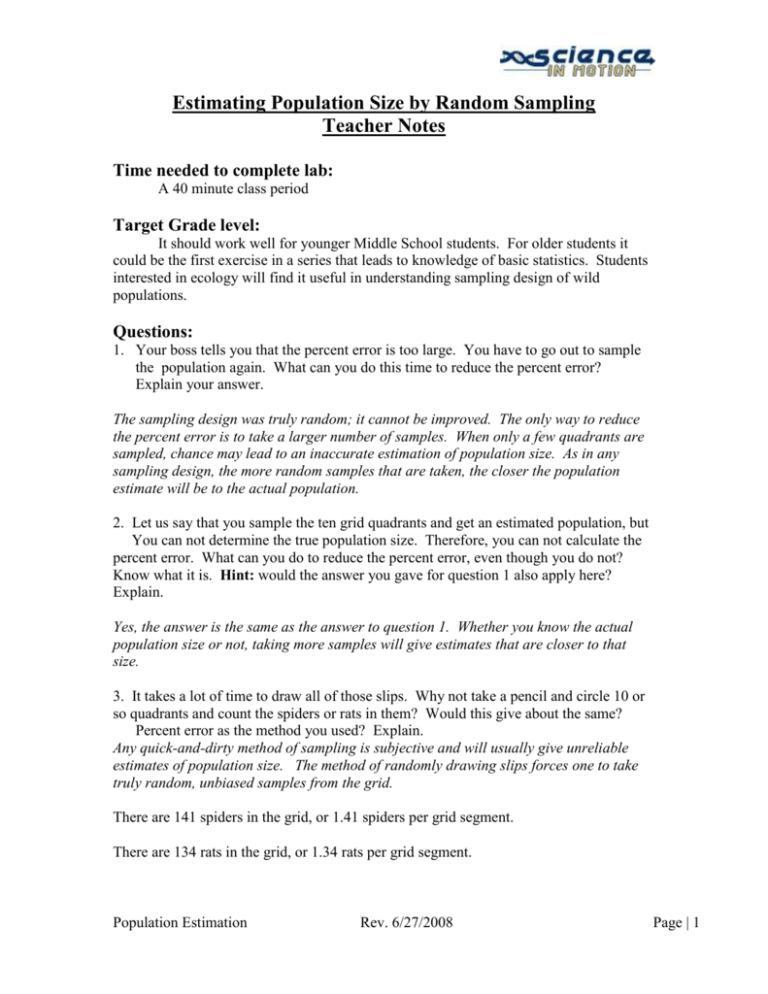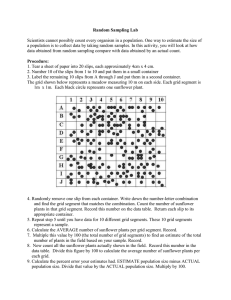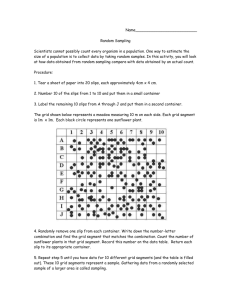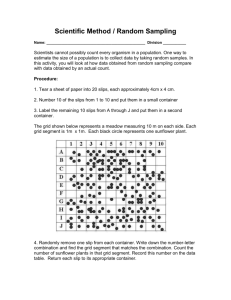Notes for Teachers: Estimating Pop
advertisement

Estimating Population Size by Random Sampling Teacher Notes Time needed to complete lab: A 40 minute class period Target Grade level: It should work well for younger Middle School students. For older students it could be the first exercise in a series that leads to knowledge of basic statistics. Students interested in ecology will find it useful in understanding sampling design of wild populations. Questions: 1. Your boss tells you that the percent error is too large. You have to go out to sample the population again. What can you do this time to reduce the percent error? Explain your answer. The sampling design was truly random; it cannot be improved. The only way to reduce the percent error is to take a larger number of samples. When only a few quadrants are sampled, chance may lead to an inaccurate estimation of population size. As in any sampling design, the more random samples that are taken, the closer the population estimate will be to the actual population. 2. Let us say that you sample the ten grid quadrants and get an estimated population, but You can not determine the true population size. Therefore, you can not calculate the percent error. What can you do to reduce the percent error, even though you do not? Know what it is. Hint: would the answer you gave for question 1 also apply here? Explain. Yes, the answer is the same as the answer to question 1. Whether you know the actual population size or not, taking more samples will give estimates that are closer to that size. 3. It takes a lot of time to draw all of those slips. Why not take a pencil and circle 10 or so quadrants and count the spiders or rats in them? Would this give about the same? Percent error as the method you used? Explain. Any quick-and-dirty method of sampling is subjective and will usually give unreliable estimates of population size. The method of randomly drawing slips forces one to take truly random, unbiased samples from the grid. There are 141 spiders in the grid, or 1.41 spiders per grid segment. There are 134 rats in the grid, or 1.34 rats per grid segment. Population Estimation Rev. 6/27/2008 Page | 1











